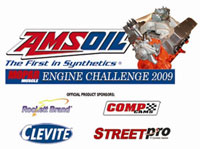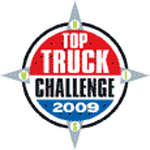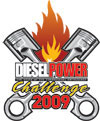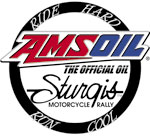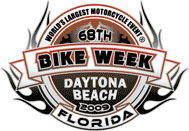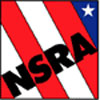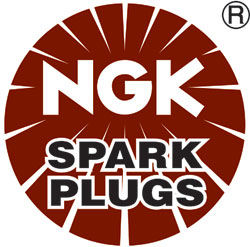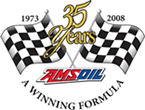Do You Have To Obey California's Emission Standards?
One number has sent the automotive industry into a frenzy of activity since it was announced seven years ago: 54.5.
If you’ve been reading up, you’ll recognize this as the corporate average fuel economy (CAFÉ) standard that was supposed to take effect in 2025.
In early April, however, the EPA announced plans to relax those standards.
The EPA Administrator said the “current standards are based on outdated information, and that more recent information suggests that the current standards may be too stringent.”
The state of California, however, has indicated plans to resist the change.
The state maintains its own, more strict air-quality standards, which several other states follow.
All signs point to a testy and potentially long battle between the Golden State and Washington, D.C.
As I write this, the EPA has yet to announce the updated CAFÉ standards, leaving the auto industry in limbo.
Will automakers have to build separate vehicles for California and the dozen or so states that follow its lead on emissions?
If the fleet-wide average fuel economy target is no longer 54.5 mpg by 2025, what will be the new target?
Complicating matters, the outgoing 54.5-mpg target didn’t reflect the fuel economy you and I would see in the real world anyway.
To explain, let’s take a few steps back.
The first CAFÉ standard took effect in 1978 and required each automaker’s auto fleet to deliver an average of 18 mpg.
The standard was expanded to include trucks and slowly increased to around 20 mpg for cars and trucks combined, where it hovered until the mid-2000s.
It’s inched upward since then, and automakers face penalties if they’re out of compliance.
Automakers have a few tools at their disposal for meeting CAFÉ standards.
One way, of course, is to build more efficient vehicles.
Each vehicle in an automaker’s fleet is assigned a target mpg based on its footprint – its wheelbase multiplied by its track width.
For example, a 41 sq. ft. or smaller passenger car, like a Honda Fit, built in 2018 has a CAFE standard of 45 mpg.
But a 75 sq. ft. or larger pickup, like a Ford* F-150, built the same year has a CAFÉ standard of 25 mpg.
You may be thinking, “My new pickup doesn’t average 25 mpg. How does that work?” While the CAFÉ standard for a 2018 pickup is 25 mpg, the fuel mileage reported on the EPA window sticker you see at the dealership is just 19 mpg.
The Honda Fit? Its window sticker reads 34 mpg.
Why the roughly 27 percent discrepancy?
It boils down to lab testing versus different lab testing versus real-world driving.
Did you catch all that?
In case you didn’t, there are three different methods of calculating fuel economy:
1) The CAFÉ standard is an estimate based on standardized EPA emissions testing.
The testing includes two drive cycles in a controlled setting.
One is meant to simulate urban driving, with frequent starts/stops and low speeds.
The other simulates highway driving. The EPA averages the two cycles, with the city results weighted at 55 percent and the highway results 45 percent.
The CAFÉ fuel-economy standard for each vehicle is estimated based on the amount of carbon expelled from the exhaust, not on actual fuel-economy testing.
The test may do a good job testing all vehicles equally, but it doesn’t simulate real-world conditions that well.
Some drivers may spend 90 percent of their time on the highway. In some areas, drivers run the air conditioner constantly.
Some drivers may have a lead foot.
2) The EPA window sticker mpg that influences your vehicle-buying decision is based on chassis dyno testing.
To more closely predict real-world mpg, the EPA adds three additional cycles to its testing.
However, subjecting every vehicle make and model to the additional testing every year would be expensive and laborious, so automakers test their own vehicles and the EPA confirms 15-20 percent of them.
As we saw, the EPA window-sticker value is lower than the CAFÉ standard.
3) Finally, you have the real-world mpg you experience after you drive your truck off the lot, which is almost always lower than the CAFÉ estimate and the EPA figure reported on your window sticker.
That’s because, as good as their lab tests may be, EPA tests can’t predict real-world results with 100-percent certainty.
When the EPA announces its new CAFÉ standards, which may not happen for several months, understand that it won’t reflect the actual fuel economy tomorrow’s vehicles will need to achieve.
It’s really a marketing number that garners headlines, but doesn’t accurately predict your next vehicle’s real-world fuel efficiency.
Automakers will continue to rely on synthetic lubricants to help achieve tomorrow’s fuel-economy standards, whatever they may be.
Synthetics not only reduce pumping losses, their increased protection enables modern engines to reach their full potential.
This scenario translates into increased use of synthetics, which spells opportunity for you.
For more information on this topic or any other question you may have feel free to contact me.
If you are interested in becoming an AMSOIL dealer follow the link below to get started.
How to Become an AMSOIL Dealer
Sincerely,
Jesse Hull
Mechanical Engineer
AMSOIL Direct Jobber
913-713-8850 | Privacy Policy

